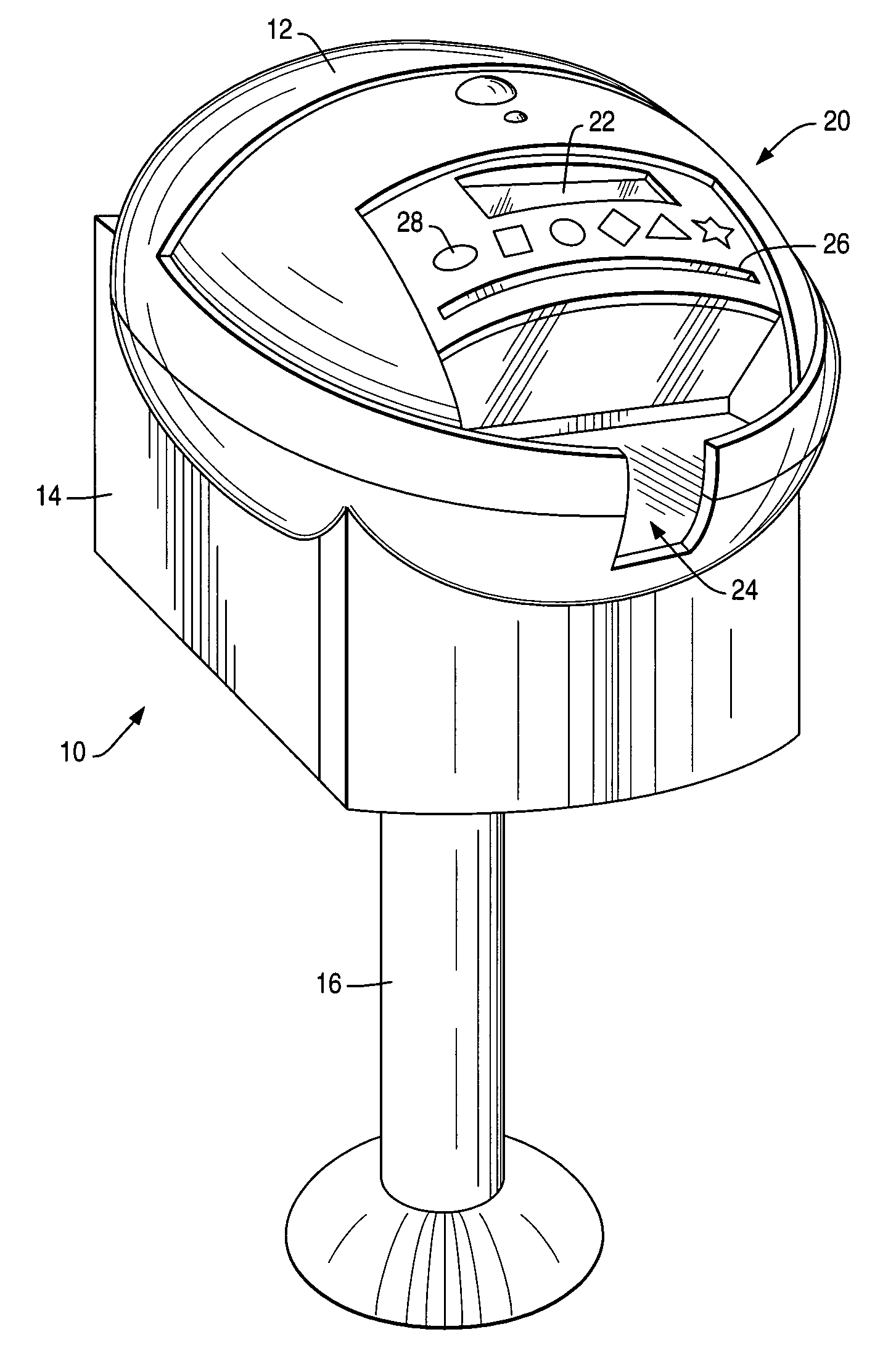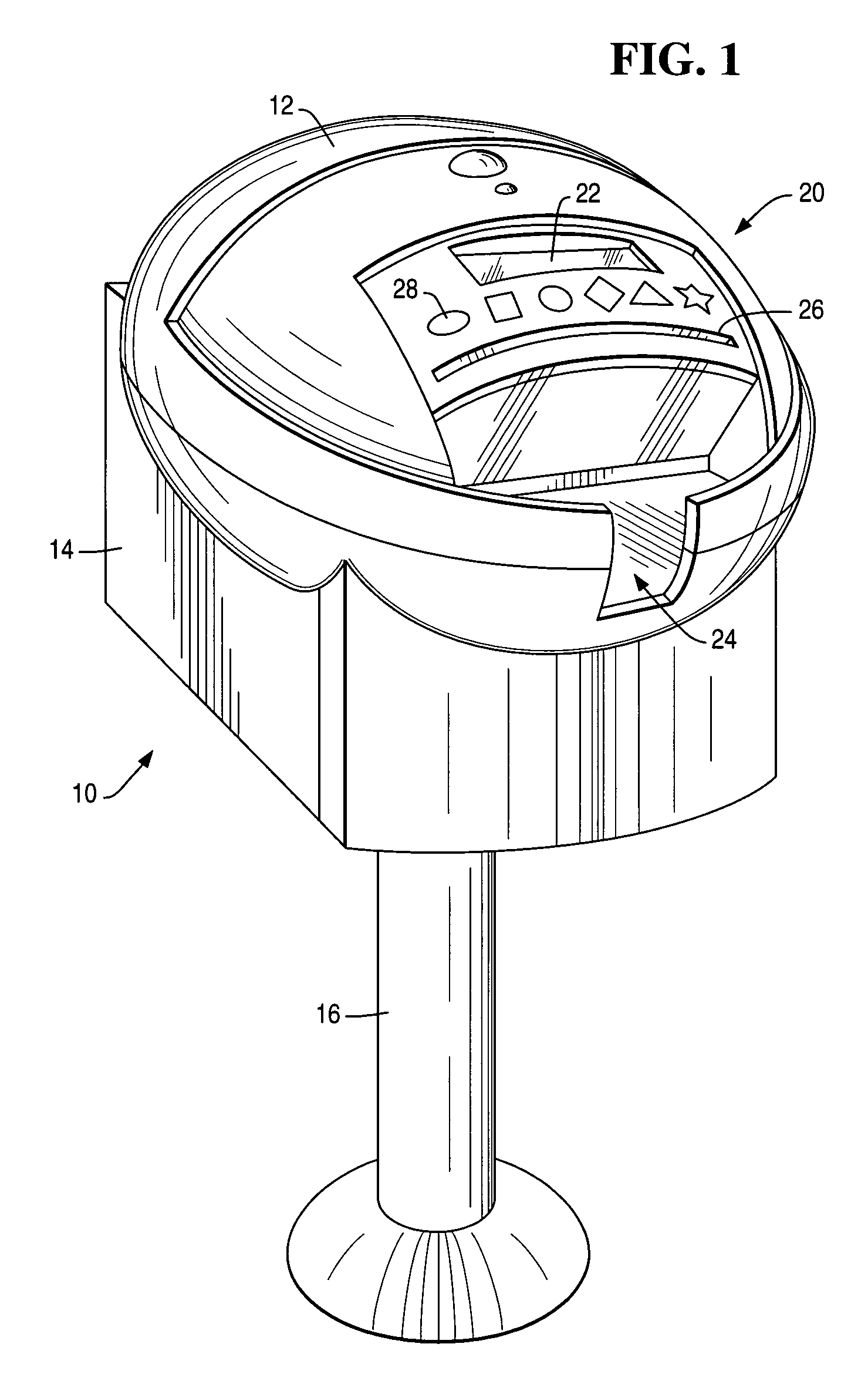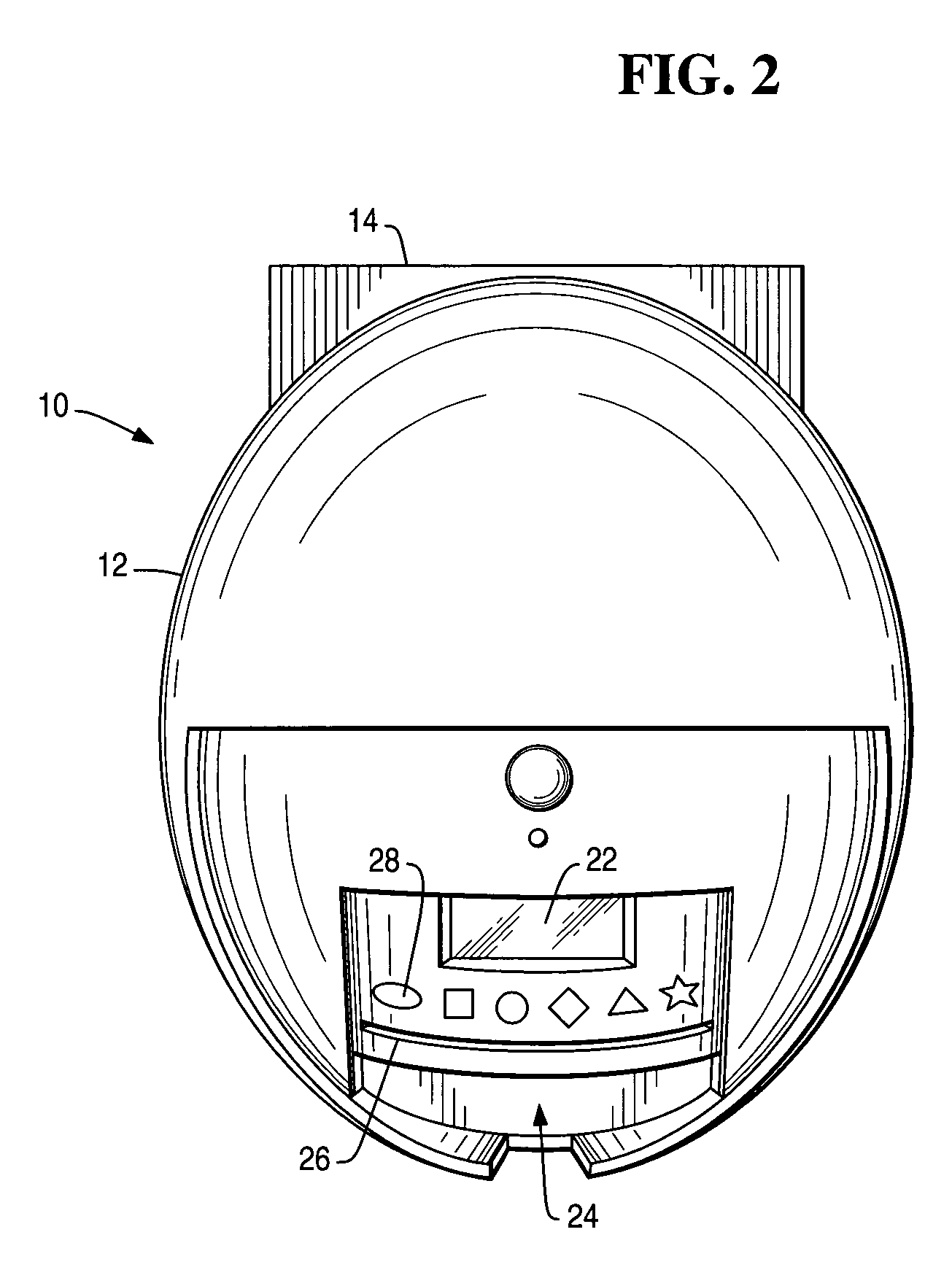Self-service terminal
a terminal and self-service technology, applied in the field of self-service terminals, can solve the problems of user confusion and/or failure to navigate through the sequence, increase the cost of providing keys, and increase the difficulty of using atms effectively for peopl
- Summary
- Abstract
- Description
- Claims
- Application Information
AI Technical Summary
Benefits of technology
Problems solved by technology
Method used
Image
Examples
Embodiment Construction
[0037]Referring to FIGS. 1 to 3, an SST 10 in the form of an ATM has an egg-shaped body 12 mounted on a base 14 that is coupled to a stand 16. The ATM 10 includes a user interface 20. The user interface 20 comprises an LCD touch-sensitive display 22, a dispensing area 24 for dispensing cash to a user of the ATM 10, a swipe card reader slot 26, and six permanently-visible indicators 28a to 28f.
[0038]The six indicators 28 are in the form of six push buttons, each push button having a different shape, including an ellipse 28a, a square 28b, a circle 28c, a diamond 28d, a triangle 28e, and a star 28f.
[0039]Referring to FIG. 4, the ATM 10 has a controller 30 for controlling the operation of the ATM 10. The controller 30 is connected to a dispenser 32, the LCD display 22, an indicators module 34 that includes the push buttons 28, and a card reader module 36 that is located behind the card reader slot 26.
[0040]Each push button (for example, 28a) is associated with a pre-defined transacti...
PUM
 Login to View More
Login to View More Abstract
Description
Claims
Application Information
 Login to View More
Login to View More - R&D
- Intellectual Property
- Life Sciences
- Materials
- Tech Scout
- Unparalleled Data Quality
- Higher Quality Content
- 60% Fewer Hallucinations
Browse by: Latest US Patents, China's latest patents, Technical Efficacy Thesaurus, Application Domain, Technology Topic, Popular Technical Reports.
© 2025 PatSnap. All rights reserved.Legal|Privacy policy|Modern Slavery Act Transparency Statement|Sitemap|About US| Contact US: help@patsnap.com



